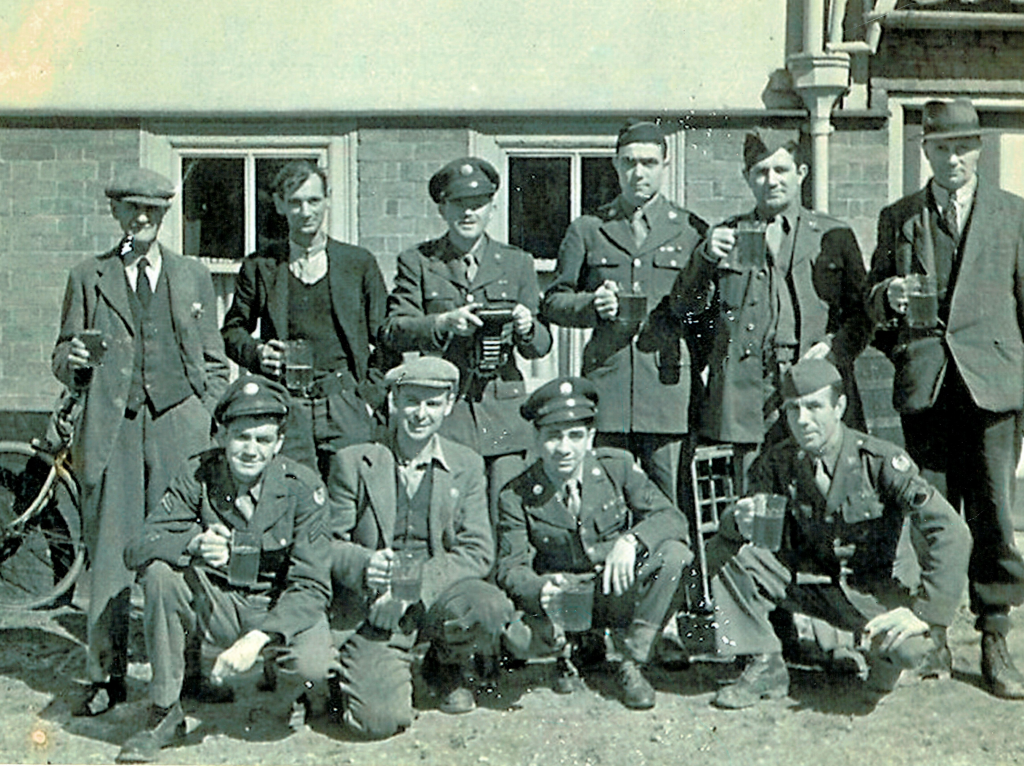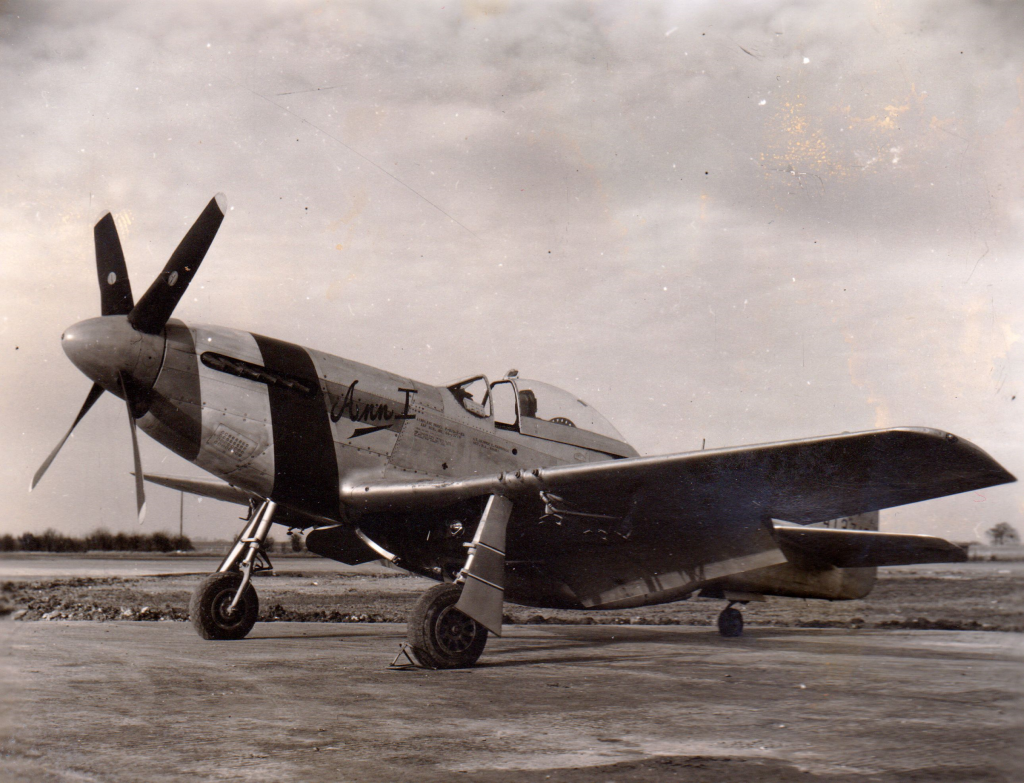by Paul Muttitt, former and current villager
I was born in Halesworth and lived in Holton Road until about 1970. Following that, with work in Colchester, Ipswich and Norwich I lived in Ipswich, Westhall, Rumburgh and Dunburgh near Beccles before going full circle and moving to Holton in September 2017.
My father was organist at Holton Church after the war and my brother and I joined the church choir at quite an early age. When my father transferred to St Mary’s, Halesworth we went with him and sang in the choir there for more than 10 years. In played football and cricket for Halesworth for several years and was involved in other organisations in the town.
From a very early age I had a love of military aircraft, fostered by my father who served in Bomber Command during the war and by my uncle who had a life-long interest, particularly in the American Army air force. My earliest memories were walking to the airfield quite early after the end of the war and I was struck by the pieces of metal lying around, presumably parts of crashed planes. The main runway ran south west to north east and was 2000 yards long and the other two were 1400 yards. There were two black ”T2” hangars. A friend and I regularly cycled to the airfield and battled up the main runway, always seemingly against a head wind, and round the perimeter track. At the end of the main runway were the stop butts, a large bank of soil into which the aircraft would test their guns before departing for a mission. Two black T2 Hangars stood forlornly against the sky as though waiting for the long- departed aircraft to return. As a youngster I dreamt that the airfield would re-open someday but that was never going to happen of course.
Every airfield had a ‘dump’, a large hole into which surplus material including parts of crashed planes, was thrown. When the Americans left in 1945, the dump was covered over but I well remember a local resident telling me that as soon as the last truck had disappeared round the bend, all sorts of goodies were retrieved including tool rolls and bikes!
Living accommodation for about 3000 was in Nissen huts built within the grounds of Holton Hall. The Hall itself was used as the officers’ billet and accommodation for some of the Headquarters Staff. My memories of the Hall after the war were of a building in disrepair and it was demolished in 1957. A Sale Notice in 1937 gave a grand description of the Hal and Estate as follows; ‘Comprising the comfortable Family Mansion with Hall, 4 Reception Rooms, 15 Bedrooms and 3 Bathrooms. Garages, Stabling, 2 Lodges and Chauffeur’s Cottage. Exceptionally Well-Timbered Gardens and Parklands all in a ring fence extending to about 83 Acres’
A bowling green existed just off the footpath from Lodge Road to Beccles Road near the church. The Nissen huts remained for some time and provided living accommodation until new housing was built. An elevated black water tower existed opposite to the messes in Upper Holton.
The airfield was built for the Americans in 1942-43 as Station 365 and was intended for use as a bomber station but in view of its proximity to the coast and it’s ideal situation for escort fighter operations the 56th Fighter Group moved in in July 1943 with its 80 P47 Thunderbolts from Horsham St Faith (now Norwich Airport). Initially the move was far from popular; Horsham St Faith had brick-built permanent centrally heated barracks so the prefabricated Nissen huts represented a distinct loss of comfort, many of the domestic sites were not completed and only one of the two hangars had been erected. These disadvantages were overcome however under the superb leadership of Col Hubert (Hub) Zemke. The 56th Fighter Group, stationed at Holton, became the top scoring American Group in the European Theatre of Operations, based on aerial victories, and produced several fighter aces. It became known as ‘Zemke’s Wolfpack’ on both sides of the Channel. The aircraft were developed as time went on and included the use of drop tanks to increase range with additional fuel. One such drop tank was floating in a pond in Lodge Road for a few years after the war.

My uncle proudly related the story of the time he met Gabby Gabreski when he was standing by his aircraft on it’s hardstanding as my uncle watched from the boundary. Gabreski walked over and got chatting to my uncle and then invited him to a party in the mess the following weekend.
Inn April 1944 the 56th was notified that it would have to move to Boxted near Colchester to make way for a B24 Liberator Group. There was little enthusiasm for the move as the 56th had settled into an extremely successful Group. Without doubt the success was attributable to the excellent leadership of Hub Zemke together with the qualities of other members including Francis (Gabby) Gabreski and Robert S Johnson, both of whom became fighter aces, Gabreski also became an ace in the Korean War. Apart from the qualities of the key personnel I like to think that the fact that this became the most successful American fighter Group was aided by the surroundings, by the nature of the local population and perhaps even by the local beer!
The 489th Bomb Group arrived with their Liberators in May 1944. The group entered combat the same month and concentrated on targets in France in preparation for the D Day landings. It supported the landings in Normandy and afterwards concentrated on targets in France before beginning flying missions into Germany from July to November 1944. The Group’s operational career was a brief one as it was recalled to the US in November.
On 6 August 1944 Major Glenn Miller visited the base with his band of the AEF and entertained in the main hangar. This was one of a series of concerts given at American vases in 1944 and from Holton he flew to Cirencester for a concert on 7 August.
In January 1945 the 5th Emergency Rescue Squadron moved in with special P47 Thunderbolts and later the unit received CA 10 Catalinas and SB 17 Fortresses equipped with lifeboats for air-sea rescue work. The airfield was handed over to the RAF after the war and for six months was utilised by the Admiralty as an advanced training base for two Fleet Air Arm squadrons equipped with Mosquito T3s and Airspeed Oxfords.

It closed for flying in February 1946.
The base operated for flying for a little under three years but its impact on the fighter record of the Americans was extremely significant.
